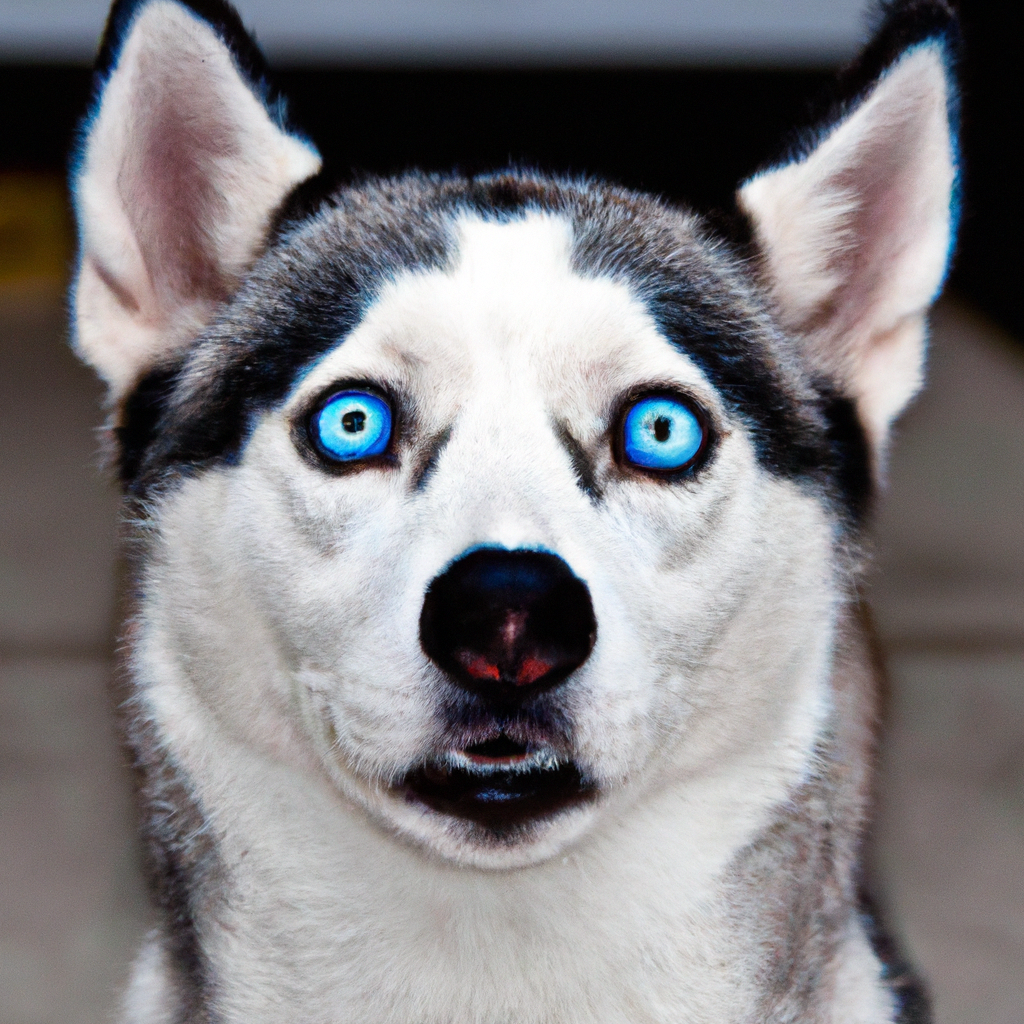Are you curious about what a husky looks like? With their striking appearance and captivating eyes, a husky is a breed that stands out from the rest. With their thick furry coats, erect ears, and bushy tails that curl over their backs, they have a distinct and majestic look. Whether it’s their piercing blue or multicolored eyes, or their expressive facial features, huskies possess a unique beauty that is hard to ignore. In this article, we will explore the physical characteristics that make huskies so visually appealing.
Physical Appearance
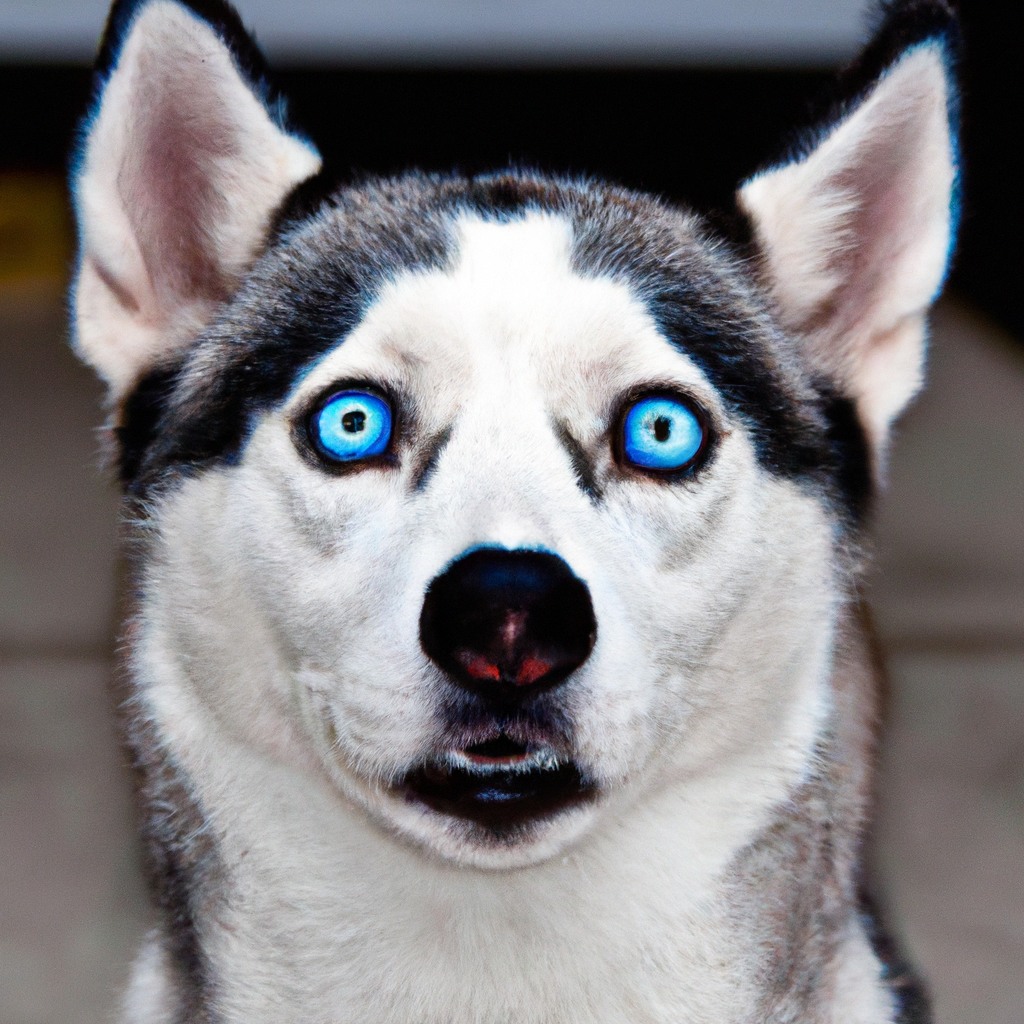
Size
Huskies are medium-sized dogs, known for their athletic and robust build. On average, they stand between 20 and 23.5 inches at the shoulder and weigh between 35 to 60 pounds. However, it is important to note that there can be some size variations within the Husky breed.
Coat
The Husky’s coat is one of its most distinguishable features. It is thick, dense, and well-insulated, which makes them well-suited for colder climates. Their fur is double-layered, consisting of a soft undercoat and a longer, coarser outer coat. This double coat helps to protect them from extreme temperatures.
Color
Huskies come in a variety of colors, ranging from black and white to red and sable. They can also have markings or patterns on their coats such as masks, saddlebacks, or splash coats. The most common coat color for Huskies is the well-known black and white combination, often seen in movies and advertisements.
Eyes
The striking eyes of a Husky are one of their most captivating features. Known for their intense and mesmerizing gaze, Huskies can have eyes in various colors, including blue, brown, or even a combination of both. It is not uncommon for Huskies to have heterochromia, where each eye has a different color, further adding to their unique appearance.
Facial Features
Head Shape
Huskies have a distinct head shape characterized by a wedge shape. Their skulls are slightly rounded, and they have a well-defined stop between their forehead and snout. This head shape gives them an alert and attentive expression, which adds to their friendly demeanor.
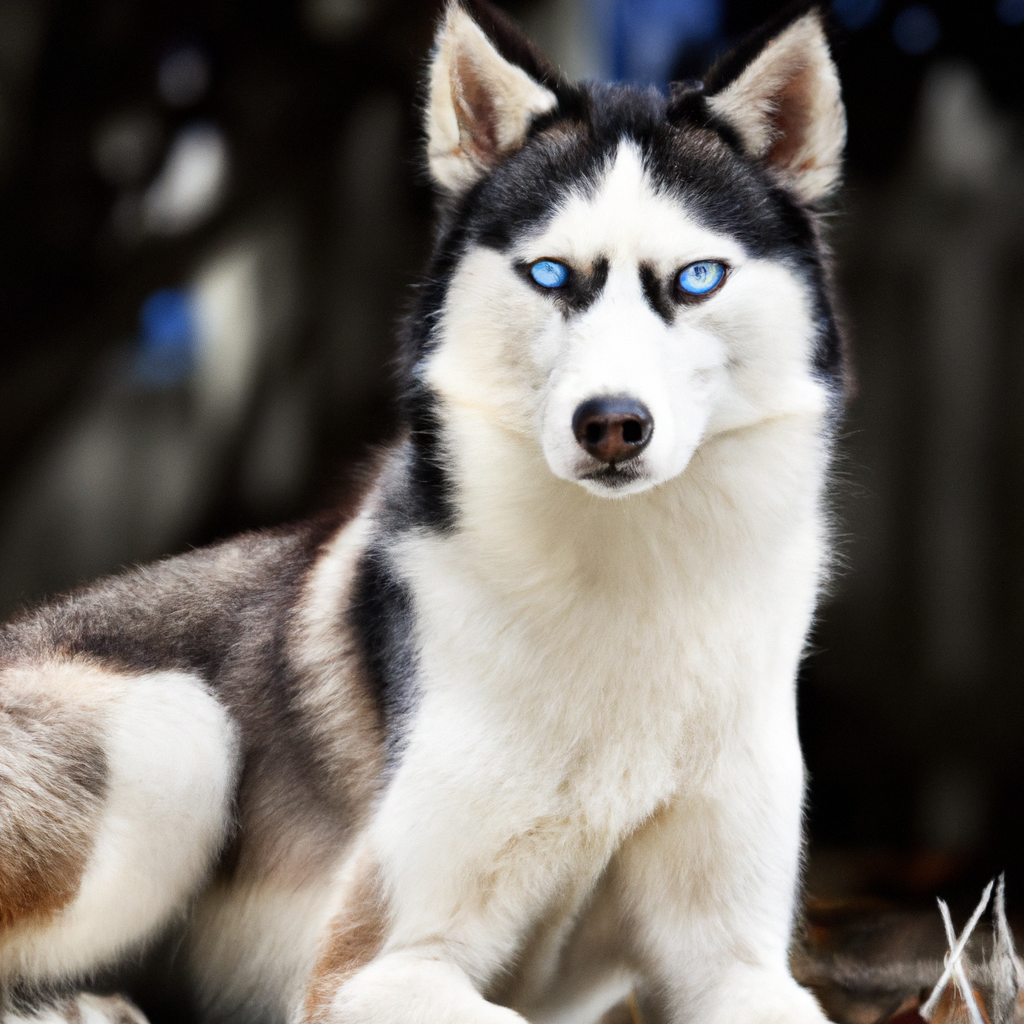
Muzzle
The muzzle of a Husky is medium in length and tapers to a point. It is proportionate to the rest of their face and showcases their strong jaw. Huskies have a well-developed sense of smell, and their muzzle allows them to efficiently investigate their surroundings.
Nose
The nose of a Husky can come in various colors, including black, liver, or even flesh-colored. It is typically large and prominent, aiding in their keen sense of smell. A well-pigmented and moist nose is a sign of good health in a Husky.
Ears
Huskies have medium-sized ears that are triangular in shape. They are set fairly close together and stand erect, giving them an attentive and alert appearance. Their ears are well-furred, further contributing to their overall aesthetic appeal.
Body Structure
Build
Huskies have a sturdy and well-muscled build, reflecting their origins as working dogs. They have a balanced and proportionate body, with a deep chest and strong shoulders. This physique allows them to endure long distances and strenuous activities.
Legs
Huskies have powerful and straight legs that are well-boned. They are positioned to provide them with agility and speed. Their legs are of medium length and help to give them their characteristic gracefulness when in motion.
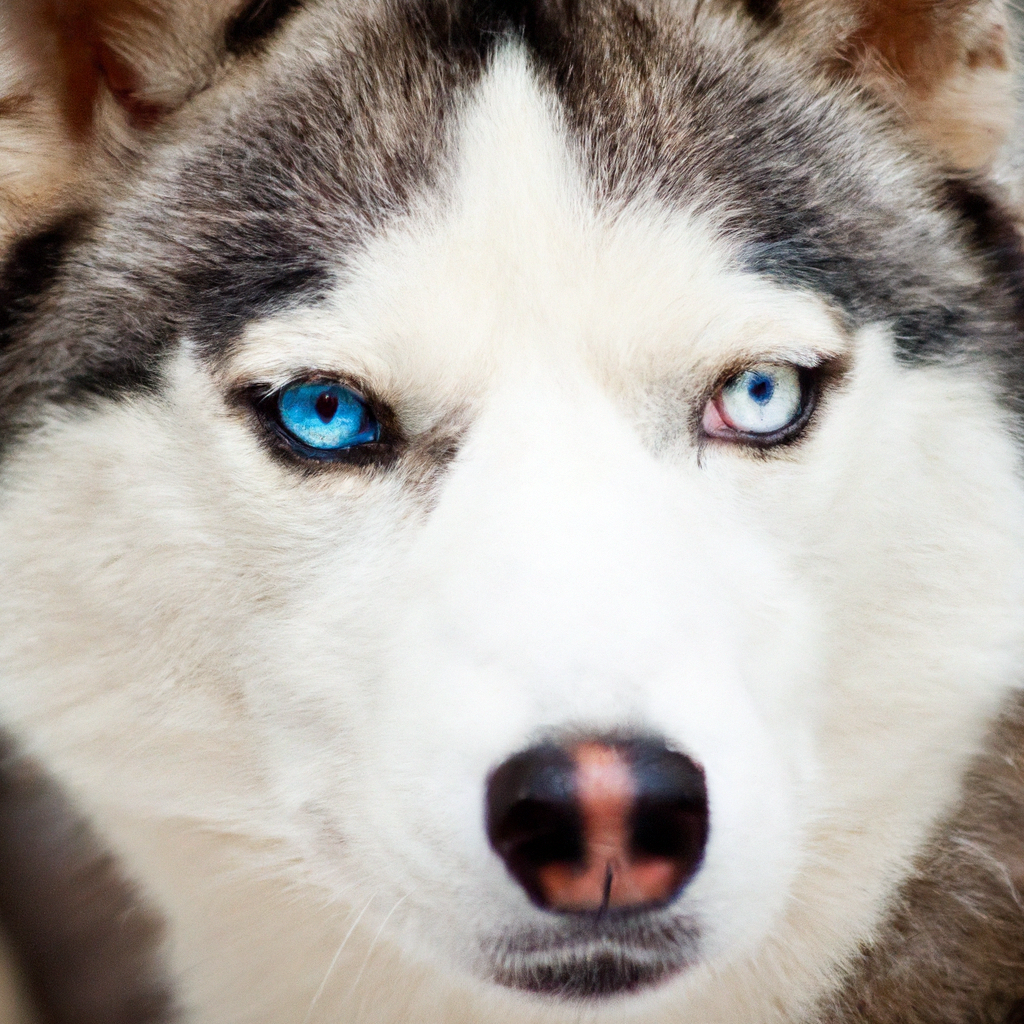
Tail
One of the most distinct features of a Husky is its tail. When at rest, their tail hangs in a downward curve. However, when in motion or excited, the tail usually curls upward and rests on their back. This tail curl is unique to Huskies and adds to their charismatic and animated presence.
Distinctive Husky Features
Mask
The mask is a common Husky feature that refers to darker pigmentation on the face, particularly around the eyes and muzzle. This mask can vary in intensity and can range from a light shading to a more prominent and striking mask. The mask adds depth and definition to their facial features, giving them a distinct appearance.
Double Coat
The Husky’s double coat is one of its most notable features. The soft and dense undercoat provides insulation and keeps them warm in colder climates, while the longer guard hairs protect against the elements. This double coat enables them to survive in harsh weather conditions and makes them well-suited for colder regions.
Tail Curl
The tail curl is a characteristic trait of Huskies. When observing Huskies in action, their curled tail adds to their graceful and elegant movement. This unique tail curl is a beloved feature among Husky enthusiasts and adds to their overall charm.
Eyes Shape
Huskies have a unique eye shape that contributes to their captivating gaze. Their eyes are almond-shaped, slightly slanted, and set moderately apart. This eye shape, combined with their various eye colors, adds to their striking appearance and often leaves people enchanted.
Size Variations
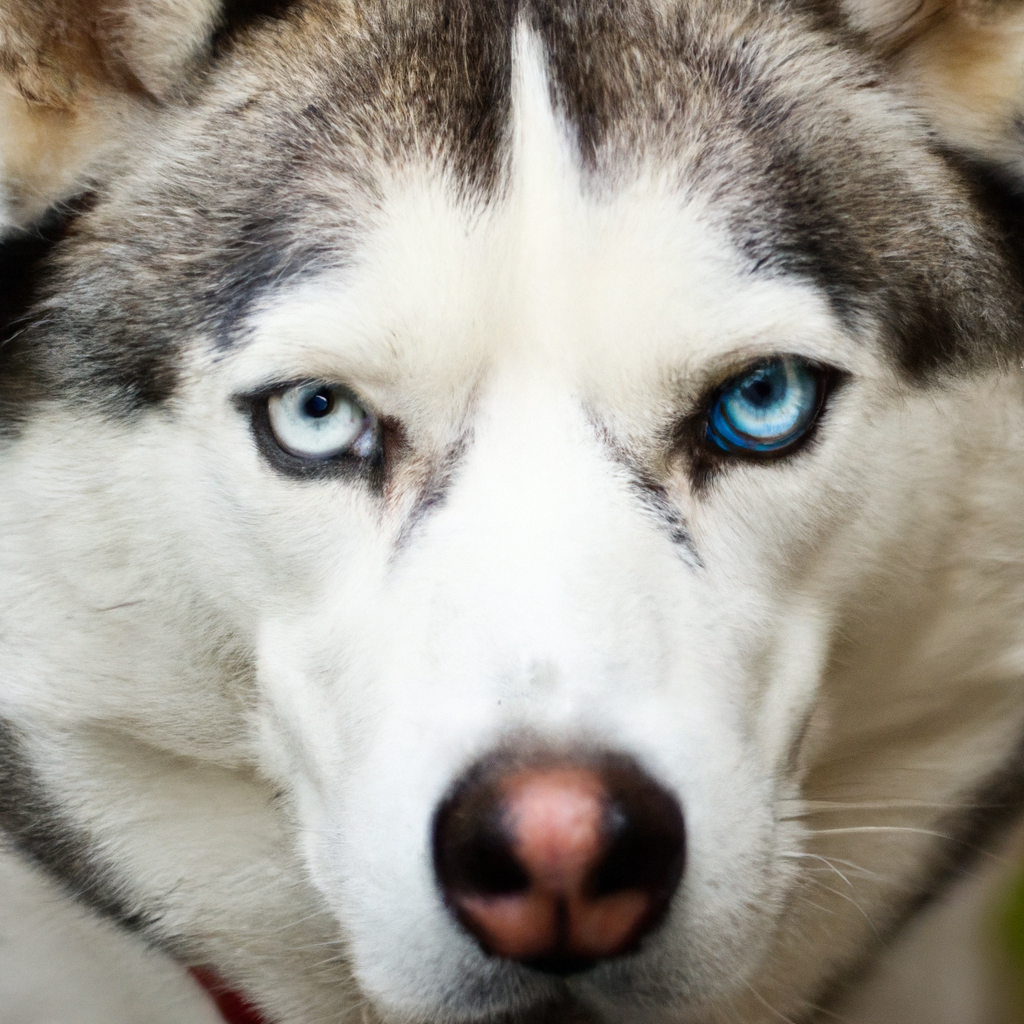
Male Huskies
Male Huskies tend to be slightly larger than their female counterparts. On average, adult male Huskies stand between 21 and 23.5 inches at the shoulder and weigh between 45 to 60 pounds. However, it is important to remember that individual Huskies can fall outside of these general measurements.
Female Huskies
Adult female Huskies are slightly smaller than males. On average, they stand between 20 and 22 inches at the shoulder and weigh between 35 to 50 pounds. Again, it is essential to note that individual Huskies can vary in size, and these measurements are just a general guideline.
Miniature Huskies
While not officially recognized as a separate breed, some breeders have developed smaller versions of the Siberian Husky, often referred to as Miniature Huskies. These Miniature Huskies are bred to maintain the same distinctive Husky characteristics but in a smaller size range, often weighing between 15 to 35 pounds.
Coat Variations
Short Coat Huskies
Although most Huskies have a long and dense double coat, there are some individuals that have a shorter and less fluffy coat. These short coat Huskies still possess the same vibrant colors and distinctive markings but without the abundance of fur. While they may require less grooming, they are usually less tolerant to extreme weather conditions due to their reduced insulation.
Long Coat Huskies
Long coat Huskies, as the name suggests, have a longer and fluffier coat compared to the typical Husky. Their fur is even more abundant and can give them a somewhat “fluffy” appearance. These long coats often require more grooming and maintenance to keep their fur in top condition. However, they provide extra warmth in colder climates.
Color Variations
Black Huskies
Black Huskies have a predominantly black coat with minimal or no white markings. The black color can vary in intensity, ranging from jet black to a dark charcoal shade. Black Huskies are eye-catching and exude an air of elegance and mystery.
White Huskies
White Huskies have a striking coat that is predominantly white, often with minimal markings, if any. Their pristine white fur stands out and captures attention wherever they go. White Huskies are highly sought after for their ethereal and angelic appearance.
Red Huskies
Red Huskies have a coat that ranges in hue from a light reddish-brown to a deep mahogany red. Their coat can have various patterns and markings, adding to their visual appeal. Red Huskies are known for their vibrant and warm coloring, which makes them truly stand out from the crowd.
Common Eye Colors
Blue Eyes
Blue eyes are perhaps one of the most synonymous features with Huskies. Many Huskies have mesmerizing, striking blue eyes that captivate anyone who locks gazes with them. This blue eye color, often intense and piercing, contributes to their overall charm and allure.
Brown Eyes
While blue eyes are common, some Huskies have brown eyes, which are equally beautiful. Brown eyes can range in shade from light golden to a deep chocolate color. Brown-eyed Huskies possess a warmth and softness in their gaze that adds to their friendly and approachable nature.
Heterochromia
Huskies with heterochromia have eyes of different colors. This unique trait is truly captivating and adds an element of mystique to their appearance. One eye may be blue while the other is brown or any combination of different eye colors. Heterochromia is relatively rare but highly sought after among Husky enthusiasts.
Comparison with Other Breeds
Siberian Husky vs. Alaskan Malamute
While Siberian Huskies and Alaskan Malamutes share some similarities due to their northern heritage, they also have distinct differences. Siberian Huskies are smaller and lighter, with a more athletic build and a faster pace. Alaskan Malamutes, on the other hand, are larger and more robust, with a stronger pulling power and endurance. Additionally, Alaskan Malamutes typically have a denser, longer coat compared to Siberian Huskies.
Siberian Husky vs. Alaskan Husky
Alaskan Huskies are often mistaken for Siberian Huskies, but they are not the same breed. Alaskan Huskies are not a recognized breed but rather a type of dog bred for working purposes. They are a mix of various sled dog breeds, including Siberian Huskies. Alaskan Huskies are generally leaner, more agile, and have a stronger drive to run and work.
Conclusion
The Siberian Husky is a truly remarkable and distinctive breed. Their physical appearance encompasses a wide range of characteristics, from their medium-sized build to their double coat and unique eye colors. With their friendly and playful nature, Huskies are not only stunning to look at but also make wonderful companions. Whether you’re drawn to their captivating gaze, mask, or curled tail, the Husky’s appeal is undeniable.
